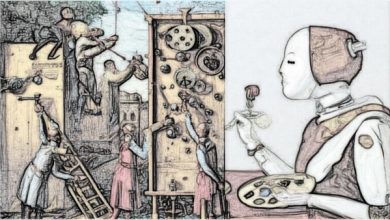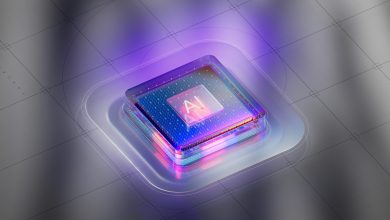
“Left unmanaged and in the wrong hands, the AI revolution could entrench rampant inequality as jobs are degraded or displaced, and shareholders get richer.”
That warning came from Kate Bell, assistant general secretary of the Trades Union Congress (TUC), after research showed that over half of UK adults worry AI will either take or fundamentally alter their jobs.
Bell did acknowledge AI’s transformative potential and the possibility that workers could benefit from massive productivity gains. But there was a crucial caveat: it must be developed properly.
That opens up a critical question – what does proper development actually look like? For me, a huge part of it comes down to workers’ mindsets. Curiosity, proactivity and openness to experimentation are, in some cases, becoming more important than hard skills or years of experience. That’s a significant shift, and one I expect recruitment and performance metrics will eventually reflect.
Why de-skilling is the real risk
There are numerous ways AI could drive inequality, but let’s focus on what’s already happening with people and skills. AI is creating a two-speed workforce. Those who learn to work alongside it are stepping into new, value-creating roles. Those who don’t are increasingly being left behind.
Here’s the key thing though – the threat isn’t always outright job loss. It’s de-skilling. Roles that once required judgement and problem-solving risk being reduced to supervising AI outputs.
What you get is reduced autonomy, fewer chances to build real expertise and careers that plateau despite the job title staying the same. Productivity goes up, wages don’t follow and the distance between what companies extract from AI and what workers gain from it grows wider by the month.
A warning sign to look out for is when AI budgets grow but training budgets stagnate. That tells you companies are banking efficiency gains without preparing employees to evolve with the technology. In practice, this means workers themselves will need to shoulder the burden of learning – those who do so by investing in curiosity and experimentation now stand to benefit the most and become value creators.
Mindset matters more than credentials
If AI risks creating inequality by eroding skills and reducing roles to repetitive oversight, then the way to counterbalance that is the right mindset. Technical knowledge will always matter – I’m not suggesting otherwise. But in an AI-saturated workplace, the real differentiator is how people approach change.
The most valuable workers won’t be those who simply wait for training or instructions. They will be the ones who lean into uncertainty and turn it into opportunity. That requires cultivating three traits – curiosity, proactivity and experimentation.
Curiosity means approaching AI not with fear, but asking how it can improve what you do on any given day. In turn, being interested in what’s possible rather than defensive about what might be lost.
Proactivity is spotting chances to apply AI responsibly and taking initiative, rather than waiting for a top-down directive. It’s the difference between someone who experiments with a new tool over lunch and someone who waits six months for official training.
Experimentation is about treating AI adoption as an iterative process by testing ideas quickly, sharing what works and learning from what doesn’t. Failure becomes feedback instead of something to actively avoid.
We’ve already seen these mindset traits play out at Algomarketing. Junior employees with no formal AI background often outperform experienced colleagues simply because they are willing to test, tweak and learn. By contrast, highly skilled professionals who resist new tools can quickly find themselves sidelined. The skills remain, but the mindset gap limits their impact.
This doesn’t devalue expertise, but reframes it. In an AI-enabled workplace, mindset multiplies the value of skills. A data scientist who experiments openly becomes a driver of innovation. A marketer who is proactive with AI will deliver more strategic outcomes. Workers who combine their in-built expertise with the willingness to explore are the ones who move into higher-value roles.
Building an experimentation culture
If curiosity, proactivity and experimentation are what futureproof workers, then companies can’t just hope these traits appear on their own. They need to be built into the culture. The mistake many organisations make is focusing only on tool training, rather than mindset development.
This is where a few practical shifts can make a genuine difference.
For example, psychological safety is foundational. Employees need to know they won’t be penalised for trying something new with AI and failing. Without this, curiosity never surfaces. People play it safe, and innovation never gets the chance to surface.
To this end, micro-experiments work better than rolling out grand initiatives. Carve out small windows of time for teams to test AI on real tasks, with low stakes and quick feedback loops. This builds confidence and what I call “AI muscle memory” – the instinct to reach for these tools when a problem arises.
Don’t overlook how much recognition matters, especially around learning and sharing. Make noise about the people who try things and pull their colleagues into the process. That behaviour spreads when others can witness it. Send a clear signal that experimentation and documenting findings is core work, not something people should be doing in their spare time.
Relatable use cases unlock new thinking. Show teams AI handling tasks that used to be out of reach – building a prototype in an afternoon, drafting analysis that would’ve taken days, automating a workflow that ate up hours each week.
Seeing it happen firsthand shifts people’s sense of what is actually possible. They develop confidence to try things and build prototypes they would have dismissed as too ambitious before. Soon enough, you have built an environment where experimentation feels ordinary rather than dangerous. That is when your workforce evolves as a unit, and AI’s benefits get distributed more fairly across the organisation.
What recruitment may look like in an AI-first workplace
As AI weaves itself into everyday work, hiring and performance evaluation will move away from credentials and technical knowledge. What matters more is adaptability and the distinctly human skills that machines can’t replicate.
Alongside curiosity, proactivity and experimentation, several traits will rise in value. Take judgement – being able to make sharp, well-considered decisions quickly, knowing what deserves attention and what doesn’t. Or agency – owning the outcome of your work rather than just ticking off tasks, making sure what you do actually adds value in an environment where AI accelerates everything. And management of AI systems – orchestrating multiple agents or tools running in parallel and aligning their outputs to business goals.
Creativity becomes more valuable, not less. Using AI as a partner to unlock original ideas, fresh approaches and new ways of framing problems. Perhaps most importantly, human-to-human skills – empathy, influence and communication. These qualities become even more essential as more routine, transactional work is automated.
Performance reviews will also evolve. Instead of measuring output alone, leaders will need to assess how employees exercise judgement, extend their capabilities with AI, create opportunities through experimentation and foster human connection in the midst of technological change.
Traditional qualifications won’t disappear, but will ultimately matter less than the ability to navigate this mix of skills with confidence.
Making AI work for everyone
Nobody questions what AI can do to transform how we work. The issue is that benefits naturally accumulate at the top unless someone intervenes – workers often end up in the same place they started. For AI to create real progress for people alongside profits, leaders need to prioritise three things:
- Reinvest in people: Productivity gains from AI should fund training, role evolution and career mobility. That way, workers move into higher-value opportunities rather than seeing their roles degraded. It’s not charity – it’s how you build a sustainable competitive advantage.
- Design with participation: Involve employees in AI deployment decisions. Workers closest to the tasks often see risks and opportunities leadership misses, and including them builds trust and unlocks better adoption. Top-down mandates rarely work as well as collaborative implementation.
- Balance efficiency with humanity: Efficiency alone can hollow out jobs. Companies that reward creativity, human-to-human connection and sound judgement will create roles that feel more valuable.
The companies that win with AI will treat it as a joint venture between organisation and workforce. Yes, shareholders might profit regardless over the next few years. But lasting success belongs to organisations where workers actually gain something tangible – new capabilities, genuine autonomy, and work that matters more. When curiosity, proactivity and experimentation guide how AI gets implemented, it can become the basis for workplaces that are fairer, more inventive and ready for the future.





